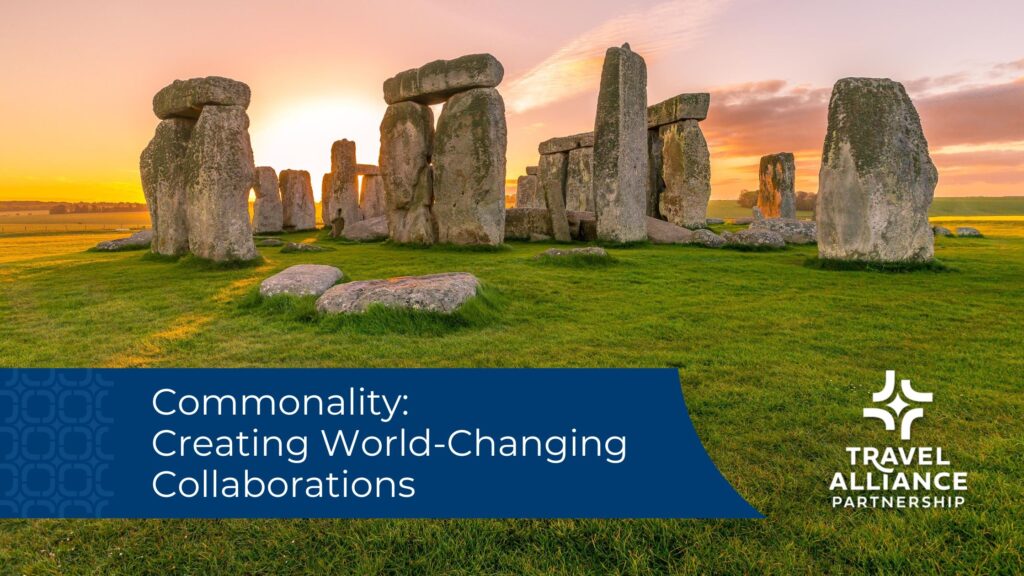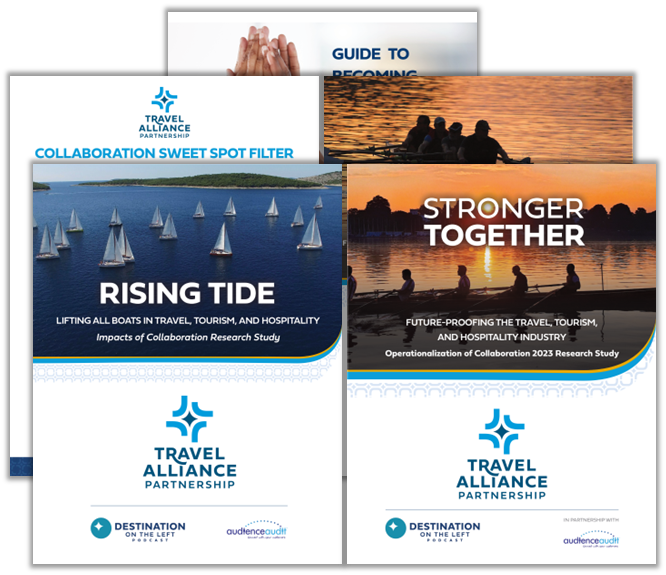Commonality: Creating World-Changing Collaborations
The strongest partnerships are built on the foundation of the Three C’s of Collaboration: Communication, Commonality, and Commitment. In my first post about this framework, we explored how open, honest communication creates trust and alignment between partners.
Now, we turn to the second C: commonality.
Commonality is what brings organizations together in the first place. It’s the shared ground that allows collaboration to feel natural and purposeful — whether that’s a common goal, a complementary need, or a shared vision for the future. Without commonality, it’s difficult for partnerships to thrive.

Why Commonality Matters
By definition, commonality is a sharing of features or characteristics in common; possession or manifestation of common attributes or a feature or characteristic held in common.
Successful partnerships don’t happen by chance. They begin with two organizations recognizing they have something meaningful in common.
- Shared challenges: Facing the same problem often sparks collaboration, as partners realize they’re stronger together than apart.
- Shared goals: Aligning around an outcome, such as increasing visitation or improving traveler experiences, creates a powerful unifying force.
- Shared values: Sometimes, the bond comes from a deeper alignment in purpose, mission, or philosophy.
Finding the commonality is the first step. Once you have decided to build a collaboration, next you want to seek and commit to relationships that will lead to long-term partnerships.
A Commonality Partnership Example
When you open yourself up to finding commonality you may find it in places that are not obvious. That’s what happened when the Pocono Mountains Visitors Bureau applied commonality to find partners that could help them realize a vision. They found partners outside of the tourism industry resulting in a program with impact well beyond the visitor experience.
There was a big issue with litter on Route 80 heading into Pennsylvania – the gateway to the Poconos and the first impression for travelers coming to the region. The Visitors Bureau recognized that local communities were doing a great job keeping up curb appeal. Resort owners and other area attractions
kept up with their first impressions. But no one was looking at the gateway, the first impression for the destination along the route 80 corridor.
So the Visitors Bureau developed the Pick Up the Poconos campaign: they built a supportive website, bought billboards, ran radio and local television efforts, all to raise awareness about the litter problem along that corridor. And then they put together a Pick Up the Poconos day.
Branching Out to More Partners
As they started planning, they realized a key limitation: individuals are not authorized to work on a section of Route 80 unless they have official permission. That led to their first collaboration: partnering with the Adopt A Highway Corporation, which held the contract and authority.
Eventually, the campaign gained momentum across the State of Pennsylvania. As the Visitors Bureau looked at ways to improve the reach within their destination, they looked for other partners who shared commonality with the initiative. That’s how they found the local United Way and the local waste authority.
Together they formed the Pocono Mountains Community Caring Project, which continues to run Pick Up the Poconos days. The project now also provides day-rate work through the homeless program administered by the United Way: individuals receive pay to help with litter pick-up while working with the county waste department.
To hear more about the Poconos listen to my podcast interview with Brian Bossuyt from the Pocono Mountains Visitors Bureau.
When you find commonality you never know where it can lead. And when you open yourself up to those world-changing collaborations you really can move mountains – or at least keep them clean.
Looking Ahead to Commitment
Together, communication and commonality create the foundation for lasting collaboration. Communication ensures transparency and trust, while commonality provides shared purpose and direction.
But strong partnerships require more than just a shared foundation — they demand commitment. In the final chapter of this framework, we explore how commitment solidifies collaboration and turns common goals into lasting results.
Related Posts
Driving Visitation Through Culinary Tourism
When visitors come to a destination, they’re looking for experiences that feel authentic and unforgettable. Few things connect people—or capture the essence of a place—like…
